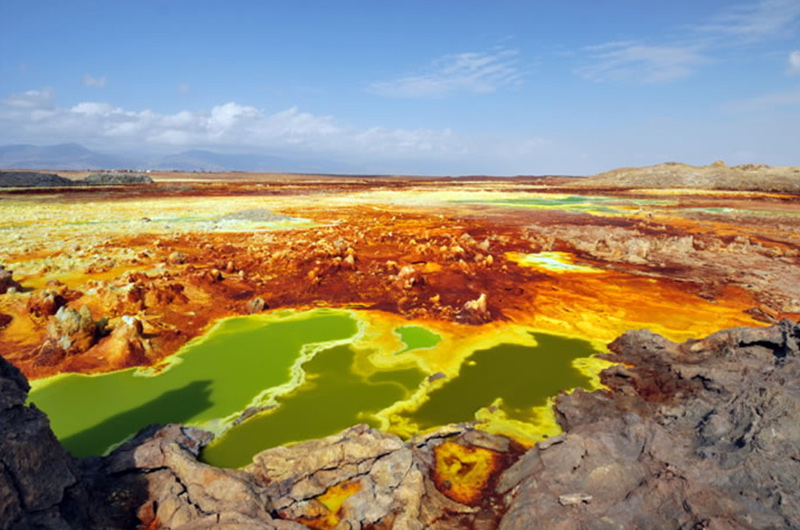
Dallol and Erta Ale
The Dallol volcano or rather the Dallol hydrothermal field is located in a remote part of the northern Danakil Depression in NE Ethiopia. It is the lowest known sub-aerial volcanic area in the world.
Dallol is one of the world’s most spectacular landscape: a vast area of uplifted thick salt deposits affected by intense fumarolic activity, probably caused by an active volcanic system beneath several kilometers of evaporation salt deposits.
Dallol is said to be the hottest place on the planet, with average annual temperatures well above 30 deg C.
The area commonly referred to Dallol volcano contains the approx. 1.5 x 3 km wide Dallol “mountain” (rising about 50 m above the great salt lake) near the border with Eritrea, and nearby warm springs including the Yellow Lake, the Black Mountain with the Blue Lake, said to be an explosion crater from a hydrothermal eruption in 1926.
Dallol is famous for its hot brine, and multicolored white, pink, red, yellow, green, gray and black salt deposits, hot springs and miniature geysers. These bizarre structures form in a complex interaction of solution and recrystallization processes driven by hydrothermal waters and rapid evaporation.
Erta Ale
Ertale is a continuously active basaltic shield volcano in the Afar Region of northeastern Ethiopia. It is situated in the Afar Depression, a badland desert area spanning the border with Eritrea. Erta Ale is the most active volcano in Ethiopia.
Erta Ale is 613 metres (2,011 ft) high, with one or sometimes two active lava lakes at the summit which occasionally overflow on the south side of the volcano.] It is notable for holding the longest-existing lava lake, present since the early years of the twentieth century (1906). Volcanoes with lava lakes are very rare: there are only six in the world

